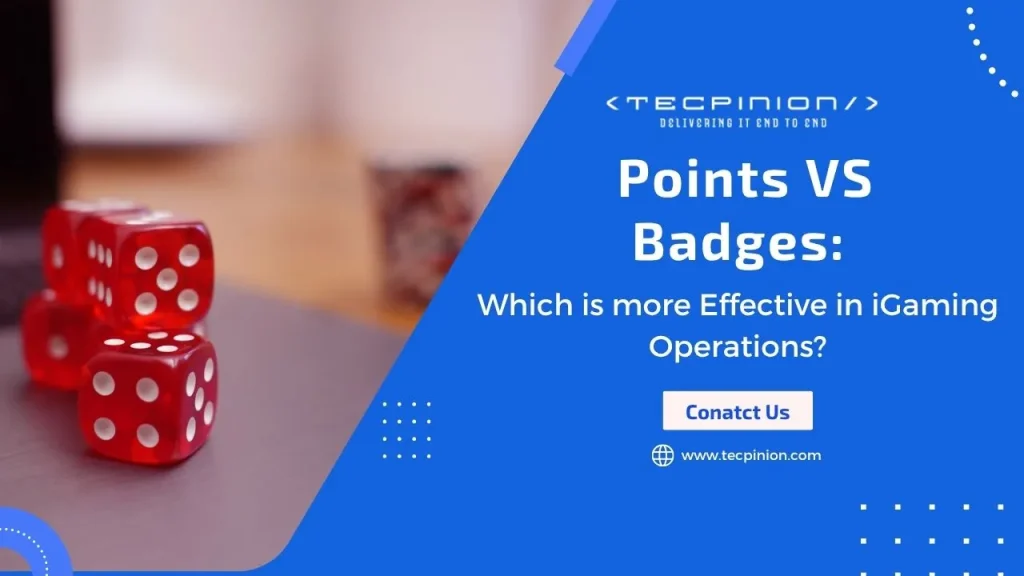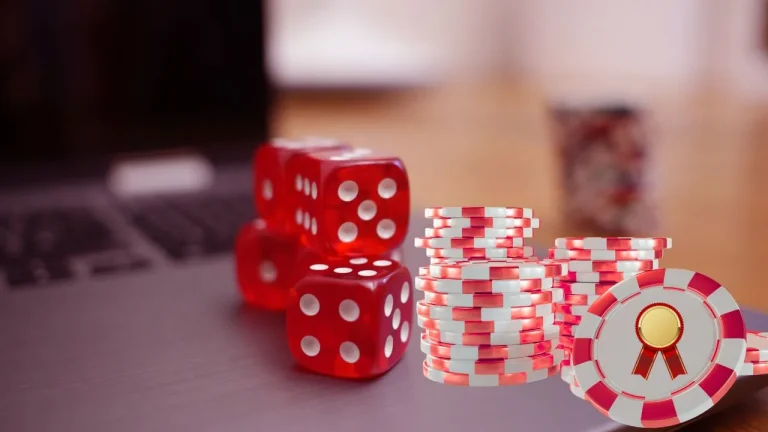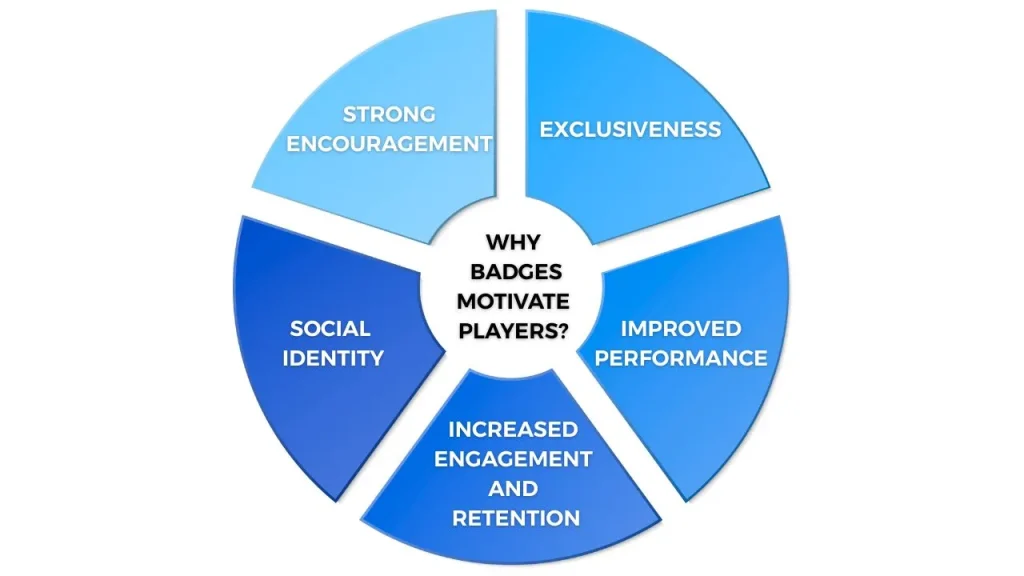Points vs. Badges in Gamification: What iGaming Operators Should Know

Table of Contents
- Introduction
- Why Gamification Matters in iGaming?
- How Points Shape Player Journeys?
- Why Badges Motivate Players?
- Points vs. Badges: Key Differences
- Implementing Effective Gamification Models
- Future Outlook for iGaming Gamification
- Tecpinion: A Strong Choice for your Future-Ready iGaming Platform
- Conclusion
- FAQ’s
Introduction
Gamification is one of those aspects of an iGaming platform that has significantly benefited from the usage of advanced tools and technologies. The operators are focusing more on gamification, knowing the profound impact it can have on overall player journey and business developments.
What is Gamification?
Gamification is a mechanism that transforms traditional gameplay into a more interactive and enjoyable user experience to boost engagement & retention, and lead to increased loyalty. The various gamification elements include points, badges, leaderboards, rewards, challenges, and so on. It has gained more prominence and is also considered the deciding factor for the outreach and engagement among consumers in some cases.
Market Stats
The gamification market is currently valued at USD 29.11 billion and is estimated to grow at 26.02% and reach USD 92.51 billion by 2030.
Why Gamification Matters in iGaming?

- Enhance User Experience:
- It can intrinsically contribute to higher retention and loyalty.
- Increased engagement reduces player churn-outs.
- It boosts the lifetime value of the customer.
- Inspiration and Motivation:
- It pushes users towards positive behaviour changes.
- Structured goals and rewards motivate players to accomplish tasks.
- The users mostly get inspired by learning outcomes.
- Social Interaction and Collaboration:
- Community forums and leaderboards drive social interaction.
- Provides a platform for shared experiences.
- Features like multiplayer challenges allow for team collaboration.
- Data Driven Approach:
- Behavioural data can pave the way for the best operational practices.
- Channelise the platform for maximum effectiveness and efficiency
- Gives rise to new marketing opportunities.
- Safe Environment:
- Players can play freely without the fear of committing errors.
- Real-time feedback is given to help the user perform even better.
- It constitutes a good learning space.
How Points Shape Player Journeys?
Points are considered the most basic and effective gamification tools in an iGaming platform that are pivotal in designing the user experience and player journey.
The following are some of the ways it can shape the player journey.
-
Progress Tracking:
1. Points can help players measure their own growth and progress.
2. It gives them a sense of accomplishment. -
Competition and Ranking:
1. Leaderboards allow players to compare and compete with other users.
2. Healthy competition can give rise to community engagement. -
Monetary/ Utility Value:
1. When points are used for bonuses, free spins, etc, players feel more engaged.
2. Such benefits only enhance enthusiasm among users. -
Goal-Oriented Play:
1. It acts as a driving force to push users to complete certain milestones.
2. Facilitates an immersive gameplay experience.
What are the different types of point systems that iGaming operators can use? It is to be noted that not all point systems work similarly. Different systems use variable approaches.
- Experience Points (XP): These points are awarded to users based on their overall activity. These points get collected and rarely depreciate over time.
- Redeemable Points: It comes in a currency-type format and can be exchanged for rewards, business, and special features. It fluctuates depending on user action and is non-refundable.
- Reputation Points: They represent community standing. These points are not fixed and go up and down based on player behaviour and peer feedback.
Why Badges Motivate Players?

Increased Engagement and Retention:
- Badges can act as salient features, encouraging them to take similar actions.
- It drives the overall engagement, positively impacting retention rates.
- The system makes each task more rewarding for users.
Social Identity:
- Badges are deeply rooted in players’ profiles on the platform.
- It symbolises skills, the hall of fame, and other significant traits.
- It validates users’ efforts and validation over time.
Strong Encouragement:
- It remains permanent, making it more attractive to the players.
- Knowing it’s less likely to disappear gives them a strong purpose in collecting them.
- A form of feedback that can tap into intrinsic motivation for consumers.
Exclusiveness:
- Rare badges carry a higher value, enabling players to strive harder.
- Exquisite badges can portray a sense of mastery, completion, etc.
- It creates commitment, leading to higher engagement.
Improved Performance:
- Scope for learning and skill development for better outcomes.
- It highlights your performance excellence and task completion rates.
- Inspires users to accomplish even more.
What are the Different Types of Badges?
Different badges are proposed to serve various needs.
-
Achievement Badges:
These are a sign of accomplishments, like completing a level or reaching milestones.
-
Skill Badges:
They demonstrate the level of expertise in specific areas. Platforms use this strategy to motivate players.
-
Participation Badges:
They signify engagement rather than performance. It drives for consistent player activity.
-
Exquisite or Rare Badges:
It is hard to acquire such badges, making them more valuable within the gaming community.
Know that we understand the significance of points and badges in gamification elements. Moving ahead, let’s see the key differences between points and badges.
iGaming Platform for Operators?
What are the Key Differences Between Points and Badges?
While points and badges have both been integral parts of gamification elements, they are meant for different purposes, and collectively they drive engagement and satisfaction among the users. The table below illustrates the key differences between points and badges.
| Points | Badges |
| Points are meant to display numerical progress. | Badges are intended to showcase achievements, accomplishments, etc. |
| Higher utility value as it can be used to redeem rewards, bonuses, etc. | They are not associated with much utility value, apart from creating social proof. |
| Leaderboards use points to rank people and can change quickly. | Badges remain permanent in the platform associated with identity building. |
| It enables immediate feedback, keeping the players more engaged. | Exquisite badges propel users’ interest in collecting them. |
| Points reward actions, progress, giving rise to short-term gratification. | Badges reward accomplishments, milestones, and create a lasting impression of success. |
Knowing that points and badges both play an essential role in gamification elements. How can operators make the optimum use of both elements in their platform? How should operators figure out the best approach for their platform? Let’s find out.
Implementing Effective Gamification Models
iGaming operators should adopt a strategic approach that uses gamification elements that align well with players’ interests and business goals. An effective gamification model implementation brings real user value and significantly boosts engagement, retention, and revenue. The following guidelines can help operators adapt to incorporate ideal gamification models for their iGaming operations.
-
Business Objectives:
There are different types of points and badges systems, so operators must be well aware of the requirements of the platforms and choose accordingly.
1. Where are points being used?
2. What is the core purpose of badges? -
Balance Short-term and Long-term Needs:
Points are short-term incentives that players earn after completing challenges and tasks. Badges are tools that symbolise mastery, skill, achievements, etc. Both elements should strategically motivate participants to perform actions that benefit operations.
-
Personalisation:
Customising the gamification rewards system to different player segments. Offering exclusive badges to high-value players can have a greater revenue generation and performance impact.
-
Social Engagement:
Leaderboards with point systems can facilitate healthy competition among users. Badges should be publicly visible on the player's profile, which could result in users experiencing prestige and recognition among peers.
-
Data-Driven Optimisation:
Operators should be able to evaluate which mechanisms can drive maximum output. Analytics tools can redefine or adjust the point systems and badge milestones.
So, these are agendas that businesses should consider to make appropriate use of elements like points and badges in the system. What is the future of gamification in iGaming?
Future Outlook for iGaming Gamification
Personalise User Experience:
- Advanced AI tools enable operators to personalise points and badges according to individual skill level.
- It is highly effective compared to one-size-fits-all systems.
Loyalty Programs:
- Points can be merged with loyalty currencies that deepen the player’s commitment.
- Badges can unlock access to cross-platform rewards.
Social and Community Engagement:
- Features like community badges and collaborative challenges are often an emerging trend.
- Enabling social sharing is a powerful retention strategy for the future.
Cross-Platform Consistency:
- Users constantly switch between digital devices like mobile phones, desktops, etc. Gamification features should sync seamlessly to ensure continuity.
- Cross-platform consistency can lead to enhanced user experience.
Immersive Experience:
- A gamified environment pushes users to play for a long duration.
- Badges can be in the form of 3D collectables.
Looking for an iGaming Platform Developer?
Tecpinion: A Strong Choice for Your Future-Ready iGaming Platform
Tecpinion specialises in offering scalable and future-ready iGaming software, with a tailored gamification framework that aligns with organisations’ needs. Their gamification models consist of different elements such as points, badges, leaderboards, missions, etc.
Tecpinion iGaming software solutions are designed with built-in gamified tools that boost retention and increase daily visits and lifetime value due to a more interactive, entertaining, and rewarding iGaming journey. The iGaming platform’s flexible nature allows for easy gamification module integration without affecting operations.
They possess a proven track record and a strong expertise in delivering compliant, secure, and high-performing gamified platforms. Their iGaming platform for operators is built with sophisticated tools and features such as real-time data dashboards that track player behaviour, engagement, and performance.
A complete lifecycle support enabling operators and gaming businesses to maximise the ROI on gamified strategies.
Conclusion
Operators are expected to offer consumers more than just a traditional gameplay experience. To help businesses and organizations accomplish their goals, it has become vital for an iGaming platform developer to design and build a comprehensive gamified platform that meets the current market standards.
Points and badges have been prominent features revolving around gamified elements and business strategies. It is in the hands of operators to make the optimum use of such key elements in the gamified platform.Working with robust iGaming software with advanced gamification tools can foster engagement and loyalty. This also helps gaming businesses to maximise their ROI in the long run.
FAQs
- What is gamification in iGaming?
The term iGaming in gamification refers to creating a more interactive and enjoyable user experience for its players.
- What are points and badges in gamification?
Points act as a numerical currency used to indicate progress. Badges visually represent status, accomplishments, and milestones.
- What are the key points of gamification?
These are elements that are used to transform traditional gameplay into more interactive and engaging gameplay experiences.
- What is the purpose of badges in the gamification system?
Badges are usually used to represent accomplishments and recognition within a gamified system.
- What are gamification points?
It is a popular game mechanism that facilitates short-term gratification by rewarding their task and action, and giving them instant feedback.

